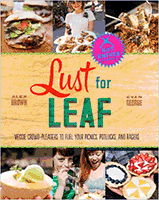
After a recent trip to the always epic Cheesestore of Silver lake, we found ourselves gorging on a really ripping cheese plate. If you have the means we highly recommend picking up any of the following lactic lords.
l’Alt Urgell y la Cerdanya (Urgelia for short)

Like many other types of epicurean ephemera, a cheese ascends the ranks of cool when it is reminiscent of something else. Urgelia is an unpasteurized, washed rind, semi soft cows milk cheese from the Spanish Pyrenees. The cheeses that most people think of when they think ‘Spain’ are harder, drier sheeps milk cheeses, and strong salt goats milk cheeses. Cows are a bit of a rarity.
The pate (the part you eat) on this little stinker is pleasantly elastic, with lots of little eyes (air bubbles). When Urgelia has some age to it, the smell from the washed rind will be a bit pungent, evocative of past prime fruits and rubber boots. Don’t be intimidated: the flavor lies somewhere in between Morbier and Gruyere: sweet, slightly meaty, with a lingering sting.
Grape: Cava, a cheaper than most sparkling wine form Spain.
Grain: St. Barnadus Witte
Hook’s 10 year Cheddar

Americans are turning out more artisinal cheeses than ever these days, and most of them follow a very traceable trajectory in terms of style: the copycat. Not to poopoo the movement, it’s very important for American dariy-people to become cheese makers, but most of the time the cheeses made are not so removed replicas of cheeses from Europe. Is cheese that is “in the style” of Epoisses anywhere near as good as it’s o.g. version? Not really, but at least we can sleep better knowing we’ve reduced our carbon footprint on the world.
Hook’s cheddars are a fantastic example of an outstanding American cheese. Yeah, cheddar came from England by way of France by way of Rome, but American dairy farmers have been making a distinctive version of this ancient cheese for a very long time. Unlike English cheddars which can be much more grainy and grassy, American cheddars have an undeniable sweetness and comforting quality that straddles the entire genre from Tillamook in Oregon to Grafton in Vermont.
Did we mention this one has been babysat since 1997? God. The cheese tastes as epic as the heaven’s gate suicide, the departure of Our Princess, and the heaviest line item veto slick Willy ever conjured post-cigar. It tastes just like Cheddar. To the Extreme.
Grape: Pinot Noir
Grain: Saison DuPont
Pascal Bellevue’s “St. Maure.”

There is a new influx of French cheeses being imported to the states that are all pretty much perfect. If you ever see the words Affineur or Affineuse on signage at your favorite cheese store buy, buy, buy. We briefed you on the logistics of the cheese-ager (Affineur) a few months back when we told you about Chantal Plasse’s transcendental Roquefort, L’Aigle Noir. Basically the Affineur is your absolutel guerentee to perfect cheese thousands of miles from where its produced. Dudes check out the best cheeses, snatch them when they’re young and mature the cheeses to perfection under watchful eyes and lots of turning.
Mr. Bellevue’s St. Maure de Tourainne, is a particular beauty because it’s raw. Any cheese aged for less than 60 days must be pastuerised, according to the dummies at the FDA. Most examples fo goats cheeses like the belle to your right are meant to be enjoyed on the younger side so you’ll probably never find a raw specimen of this type of cheese. Usually the word Raw makes many would be chesefiends freak a little: it sounds strong and dangerous. With younger cheeses like this Loire Valley Goat, the pasteurisaztion robs the milk, and thus the cheese, of its beautiful subtleties. This cheese is very delicate, and you can taste the grass the goat ate, and the dirt that grew the grass.
Grape: Sancerre
Grain: Cantillion Geuze
Bleu De Bocage

The last on the lineup is another from Pascal’s caves. It’s also unpasteurised and it come from a small spattering of blues made with Goat’s milk. The goat milk blue is a tricky subject, and usually the results don’t marry the sting of penecilium roqueforti, with the acidity of an aged french goat’s cheese. This cheese is the perfect conciliation of those two vibes, the mold meets the goat on equal footing with a crumbly ivory pate and a finish with real staying power. This cheese is kind of invincible. In most cases when a blue is turning a little pink around the gills it means it’s walking towards ammonia avenue, but Bocage was totally perfect: tart, salty, vivid.
Grape: Late Harvest Banyuls
Grain: Lost Abbey’s 10 Commandments





you people and your cheeses… this is making me crazy with desire. is it too forward of me to request an Epic Cheese Rally upon my triumphant return to the west this winter?